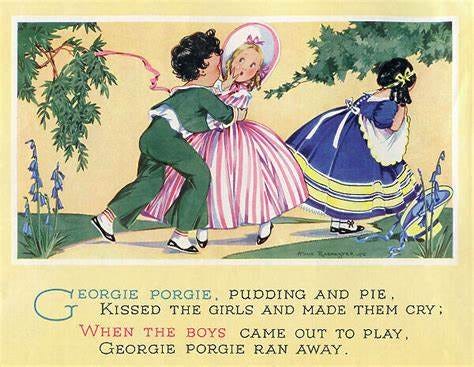The way I look at the current moment is like a return to the pulp era of 1900-1940. Short, fast fiction. Instead of being paid by the word, today authors are paid by the page read on Kindle Unlimited. The new technology has brought back an old strategy.
Write fast, publish fast, find your audience on the move.
I have just finished my third novel, since starting in January. The first one took a couple months to write, and rewrite (don’t ever do that).
The second one took a couple months to write as well, though I didn’t rewrite it. I had to focus on work, and was taking care of my ailing father who was in hospice care.
He passed away when I was at the 15,845 word of my third novel at around 11:30 am on July 11th.
I finished the novel, more or less except for some touch ups yesterday, July 17th. It came it at 41,000 words.
I finished book three in about two weeks of steady writing, sometimes I’d write 7,000 words in a day, sometimes 800 words. I averaged about 2,000 words on the weekdays, and 4,000 to 5,000 on days off.
I didn’t notice any significant dip in the quality of my writing. I’m naturally a one draft writer, I tend to cycle back as I go, add in details, and correct mistakes. I usually have a split screen setup. On one side is Scrivener and on the other side is the outputted PDF. I tend to compile after every chapter and then read what I wrote. Making corrections as I go.
I didn’t realize this was actually a known method of writing, but when I found the work of Dean Wesley Smith who does workshops, and wrote a book called “writing into the dark” I realized that this was likely the method used by a lot of professionals.
That got me on to Lester Dent’s Master Plot Formula. Which I’ve read and copied by hand so that I could learn it well.
It sounds a lot more formulaic than it is. It’s really just a general outline of the 4-Act structure, or the 3-Act with one pinch point.
Ultimately they are all shadows of the 5-Act structure anyway. 3-Act structure with two pinch points is essentially just 5-Act Structure.
The concept is basically that you break your story down into quarters for the 4-act structure. Mainly because to tell a good story you really only need one pinch point. The second pinch is really there to drag the story out to fill a wordcount. This is due to the rules of the failing trad-pub industry. The one that insists you cram 50,000 words of story into 110,000 words.
Most of the trad pub books I’ve read recently seem to drag on forever. The last one I read was Patterson’s Kiss the Girls. I have issues with that story from a character perspective, but it was very good. Masterfully told. But it was about 150 pages too long. He managed to spice it up with a pointless joy ride on the roof of a range rover though.
Anyway, back to the Master Plot Formula. You’re supposed to split a 6,000 word short story into 1,500 word chunks, and for each chunk you have a basic outline of what to do. Essentially, just make everything go wrong for your protagonist. If you have more than one protagonist, make it all go wrong for each of them, preferably in a unique way.
The key to the idea is that you need to start your story with some unique component. Or a mix of unique components. In general that’s a unique weapon or goal, and a unique setting. It could be a unique method of killing used by a criminal, or a unique method of robbing.
The uniqueness of the “weapon” and the “setting” is genre specific. If you were writing romance, you might want to pick a unique or romantic setting, say 15th century Venice, and a unique hearthrob, say a moorish warrior and you’d have a story. From then on you just pile on the obstacles for the protagonists and so on.
There are genre specific things you need to do, trope based scenes that have to happen. The Master Plot Formula doesn’t erase those requirements.
I don’t write romance, I write Dark Fantasy and Science Fiction. We have our own tropes to guide us.
The whole point of the Master Plot Formula is to get you going. It’s something you need to internalize so that your inner creative voice has access to the format and knows to use it.
Mainly it has two key methods of building tension. The first one is called the MENACE. The MENACE is the cloud hanging over the protagonist. Some worry, some dread inducing thing that is pushing him forward. In the modern day, we talk about timers. Bomb timers are a classic and easy kind of MENACE.
The next thing is the SUSPENSE. The SUSPENSE is the question in the reader’s mind. It’s ‘what is X all about?’ Who is the blond girl? Who planted the gun? Who sent the letter. Something like that. The SUSPENSE has to exist in every quarter of the story. At the end of the 1,500 words you have to be able to state what the MENACE is and what is the SUSPENSE, or the obvious question in the reader’s mind. If you have those two things, you can pull a story along just on that. Add more, get more. But you need at least those two.
In the case of Kiss the Girls Patterson creates an implicit timer. Scootch. Alex Cross’s niece is missing, likely taken by Casanova (eventually we find out yes she was, MENACEx2). He goes to some lengths to let us know early on that she’s been missing for over 4 days. Anyone who reads crime fiction, or studies crime, knows that after 48 hours of being missing, every hour increases the chance of her never being found.
That’s a timer. Every chapter where he doesn’t find Scootch is like a timer counting down. It’s a constant MENACE for the protagonist.
Because it’s a thriller, about a serial killer, there are implicit points of SUSPENSE, but Patterson takes it further. He introduces the disappearing house. Then he has the Gentleman Caller who doubles the SUSPENSE, especially after the getaway. First we wonder where he’s off too, but when we find out, then we wonder how much worse it’s all going to get.
The true mastery of Patterson is that these things feel naturally suggested by the story. None of them feel artificial. He doesn’t need to inject a bomb with a timer, because a kidnapped family member does double duty. It makes it personal for the protagonist, and it puts him on a clock that is counting down to her death.
The disappearing house comes off a little forced, but not too bad as it is also central to the story.
But the key is, you have to do this from the creative voice.
If you try to write anything from your critical voice, you’ll sink. It won’t work. The critical voice is a negative instrument. It tells you what not to do, what not to say.
One of the reasons I’ve stalled with dictation is that I find my critical voice just won’t go away while I’m speaking. I still need to practice more to build up the skill.
I’ve gotten to the point where I can compose some kind of story, but man is it like pulling teeth.
Another key tip I’ve learned about writing is to have a writing space and a writing computer. I went out to Walmart and bought myself an Asus Vivobook. Man is it a piece of crap. It can barely handle running scrivener.
I have nothing else on it. Not even internet.
I’ve set aside a place to write that’s comfortable. I’m aloud to write, smoke, and nap. Nothing else.
Absolutely no trick has worked as good as that for writing. Once I did that I went from 500-1000 words a day to up to 7,000 words. I have multiple 5,000 word days. It just pours out of you.
Getting a dedicated writing computer is the best $400 I have spent so far on writing.
I also purchased some Dean Wesley Smith courses. So far they are good. I’ve learned a lot that has helped me improve my writing.
I prefer the classic workshops that I can do at my own pace. I tend to listen to video/audio content at 2x speed. I finish and entire week in about 15 minutes.
Most of what I’ve learned so far has helped me refine things I already knew, or at least my creative voice knew them, and all I had to do was realize it and then get the hell out of its way.
It knows how to tell stories and its damned good at it. Really my job is to make myself comfortable so it can get to doing what it loves. And to keep the critical voice occupied long enough somewhere else so it doesn’t bowl over my prose.



